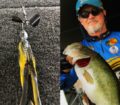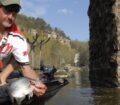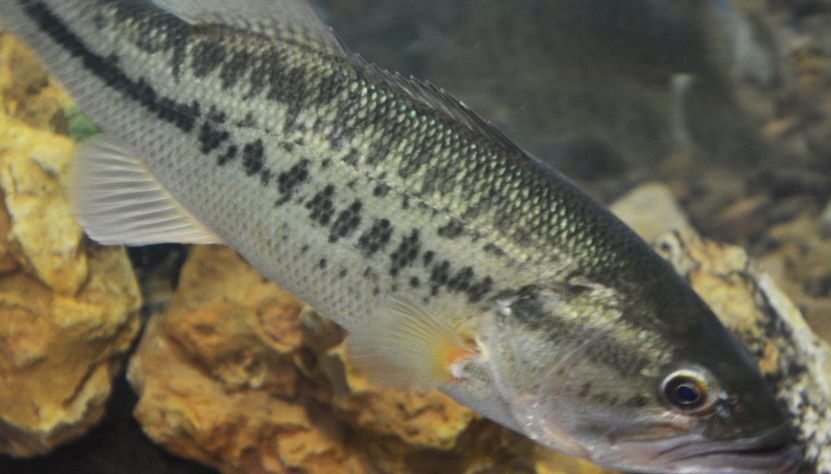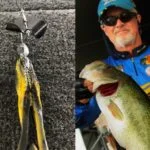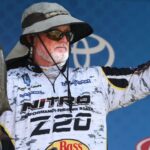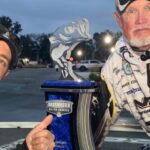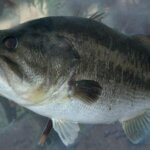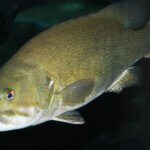Editor’s Note: According to Rick Clunn of Ava, Missouri, four-time Bassmaster Classic Champion, “The big 1/4-ounce buzzbait will attract better quality bass than many other lures. I believe the bigger the bait and the more the racket it makes, the larger a bass must be to eat it. Big bass require larger bait fish for a meal than smaller fish do. And, when that buzzbait comes walking across the water, running into structure and acting dazed, a big bass is more likely to inhale it than a small bass will. However, I really don’t care why a lunker largemouth seems to prefer a buzzbait more than small bass do. I just know from experience that it does.
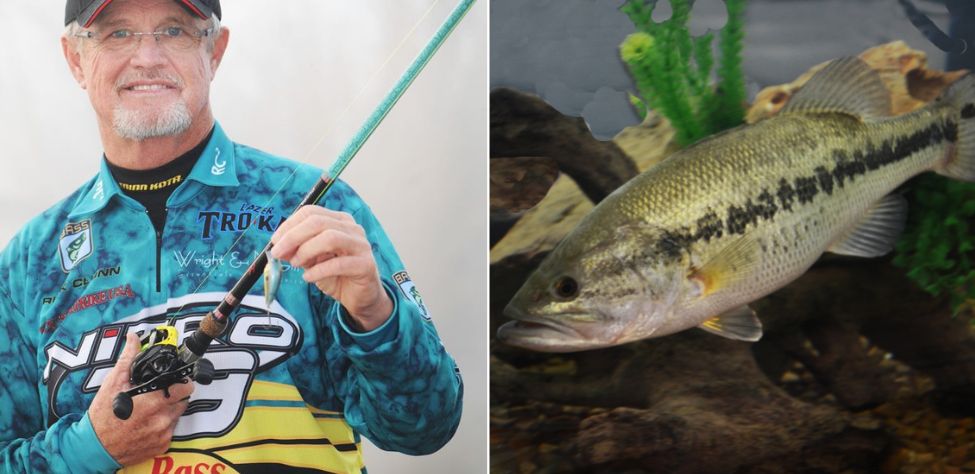
“There are basically two types of visible logs in the water – the ones that stand straight-up (standing timber) and the ones that lie flat on the water or at an angle to the water (fallen structure). I catch more bass on fallen timber than I do standing timber. Once again, I believe it’s because the bass favor structure horizontal to the bottom rather than vertical to the bottom.
“My favorite way to work a buzzbait lure on fallen structure is to have it running parallel to a log in the water. Every few feet I want the blade to hit the log, and the bait to appear stunned. If there is a bass lying up against the log, the fish will hit the bait instinctively. I like to throw past the tree in standing timber, bring the bait to the tree and have it hit the structure above the water line. Next, I’ll cast to the opposite side of the tree and then in front of the tree. If the bass fails to hit the bait right after it collides with the structure, the fish usually will strike within 2-feet away from the tree. Timber, stumps and brush are second only to grass beds as my favorite spots for buzzing bass.”
More Tactics, Gimmicks and Gadgets for Buzzbaits:
“If bass are missing your bait, slow your retrieve down, or else feed the bait to the bass when it strikes. One of the hardest tendencies to overcome when fishing a buzzbait is overreacting to the strike, especially when your strikes are far apart. Feel the fish on the line before you set the hook. Many times a bass will blow-up out of the water and come down on the buzzbait. If you try to set the hook as soon as you see the bass break the surface, you will miss him, because the fish doesn’t have the lure in its mouth.
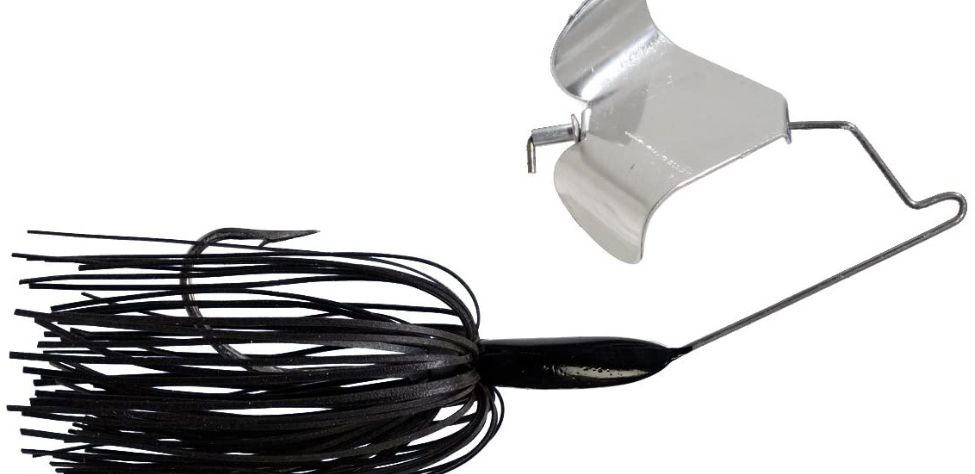
“I try to wait to feel the fish before I set the hook. By doing that, I land more of the bass that strike at my lure, than I did before I learned to wait. Sometimes I even will give the bass a little bit of slack to make sure the fish has the bait in its mouth before I set the hook. This waiting is hard to learn and requires a lot of mental discipline.
“There’s been a lot of discussion about the length of the skirt and the amount of fluff that the skirt has when you are discussing buzzbaits for catching bass. I’ve found that the size of the blade and the tone of the lure (the sound it makes) are far more critical to the bait’s ability to call bass than are the length or the size of the skirt. For instance, the bass in Florida seem to prefer a much-softer gurgle and a much-quieter buzzbait than bass in other parts of the country. I don’t have any scientific research to back this finding up. I just know from experience that often a generic buzzbait with less sound and smaller blades catches more bass for me in Florida than a big buzzbait does.
“The best suggestion I can make is that if bass seem to prefer one particular type of buzzbait over another one, try to give them the bait they want. You can find this out by testing several different varieties of buzzbaits in your region.
“The buzzbait is an effective, deadly lure on big bass. You can throw it out, retrieve it and catch some fish, or you can tick it off the cover, learn to fish patterns within patterns and experiment with different types of buzzbaits to take more bass.”
Looking for more content? Check out our YouTube channel and watch “Captain Randy Boggs – Why and How to Use Circle Hooks” by John E. Phillips.
Expert Guidebooks on Bass Fishing: Best Sellers

If you want to become the best you can be, find someone who’s already become the best at what you want to do and follow his or her instructions. This is what I’ve done in my new book, Bass Pros’ Season by Season Tactics.
In this book, I’ve chosen some of the best bass fishermen to give you advice on how to find and catch bass during each period of a bass fish’s life, including professionals like Kevin VanDam, Denny Brauer, David Fritts, Rick Clunn, Larry Nixon, George Cochran, Mark Davis, Woo Daves, Gary Klein, Davy Hite, Michael Iaconelli, Skeet Reese, Mark Rose, and Shaw Grigsby.
My hope is that this book will help you find and catch more bass at every time of the year and each day you’re on the water. The men included in this book are some of the best mentors I know of for successful bass fishing anywhere in the nation.
VERSIONS: AUDIBLE & PRINT
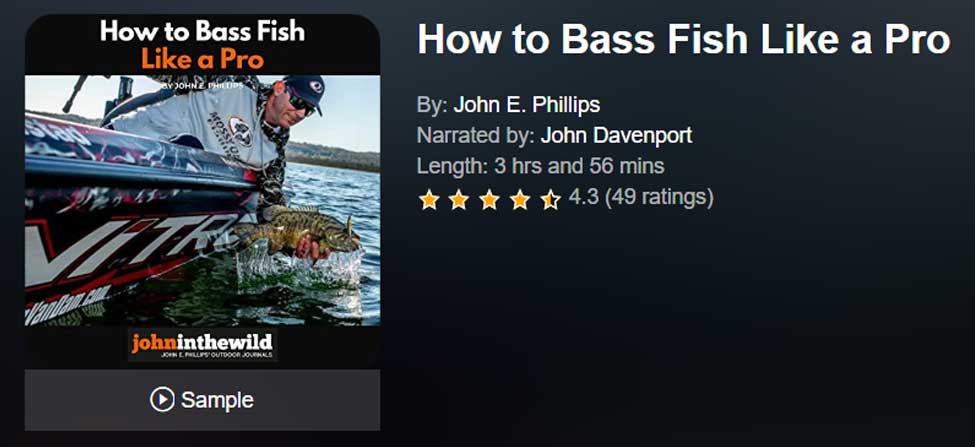
How to Bass Fish Like a Pro
If you could sit down and interview some of the best pro bass fishermen in the world, what would you want them to tell you to help you improve your bass fishing skills?
In this book, How to Bass Fish Like a Pro, Kevin VanDam explains how he catches bass consistently, and how he fishes all 12 months of the year. In the bonus chapters, he will tell you how to fish for hot-weather bass.
Denny Brauer will tell you the ways he hates to fish, how he picks the best fishing lures for different water and weather conditions, and will give you his best fishing tips for hot weather. In Brauer’s bonus chapters, he’ll teach you when to flip a jig, a tube, or a creature bait and tell you his three tips for how to be a better fisherman.
Mark Davis, in Chapter 3 of the book, explains his five secrets to becoming a better bass fisherman, how to turn your bass fishing around to the positive side, and how to catch hot-weather bass. In the bonus chapter, you’ll get six different interviews with Davis, where he tells you: three tips for becoming a better bass fisherman; his three favorite bass lures; and how to keep a big bass on the line and get it to the boat.
James Niggemeyer tells you how to become a bass pro. He also tells you how to catch bass when the weather sizzles. In Niggemeyer’s bonus chapter, he explains how to move from being a bass-club fisherman up to being a pro.
Mark Rose will explain his five favorite go-to bass lures, and how to catch bass in the middle of the summer.
In this book, you’ll hear from top-performing pro fishermen about how they catch big bass consistently, and what they do to win millions of dollars as professional bass fishermen.
VERSIONS: AUDIBLE, KINDLE & PRINT
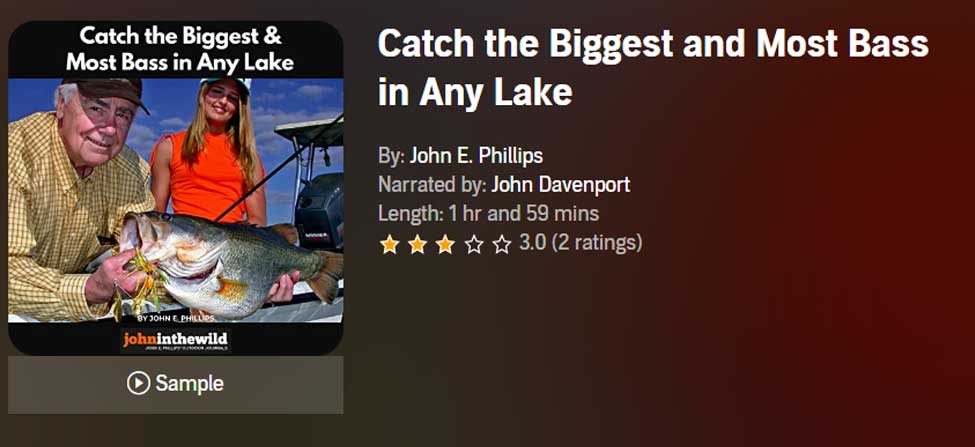
Catch the Biggest and Most Bass in Any Lake
If you were having open-heart surgery at the hospital, you’d want the best doctor with the most experience and the latest equipment and techniques that money could buy to do your operation. You’d study these doctors’ credentials to learn who was the best.
This is the same type of research that author John E. Phillips has done with the best bass fishermen in the nation to solve the problem of how to find and catch the biggest and the most bass in any body of water that he fishes.
This is the same type of research that author John E. Phillips has done with the best bass fishermen in the nation to solve the problem of how to find and catch the biggest and the most bass in any body of water that he fishes.
In this book, you’ll hear about the techniques, tips, baits, lures, and tackle that 18 of the nation’s best professional fishermen use to support their families by winning bass tournaments and catching the most and the biggest bass they can in every tournament they fish.
Most of these anglers are Bassmaster Classic winners, Megabucks winners, Angler-of-the-Year and FLW Tour winners – like Rick Clunn, Kevin VanDam, George Cochran, Mark Davis, Paul Elias, Skeet Reese, Larry Nixon, Hank Parker, Ken Cook, Denny Brauer, Alton Jones, and Jay Yelas.
Also, every serious bass fisherman should know Timmy Horton, Mark Rose, Randy Dearman, Harold Allen, Mike Wurm, and Shaw Grigsby, men whose tactics you’ll find in this book. To learn how to fish for bass and change your bass-fishing trips from fishing trips to catching trips, this book is a must-have.
VERSIONS: AUDIBLE, KINDLE & PRINT
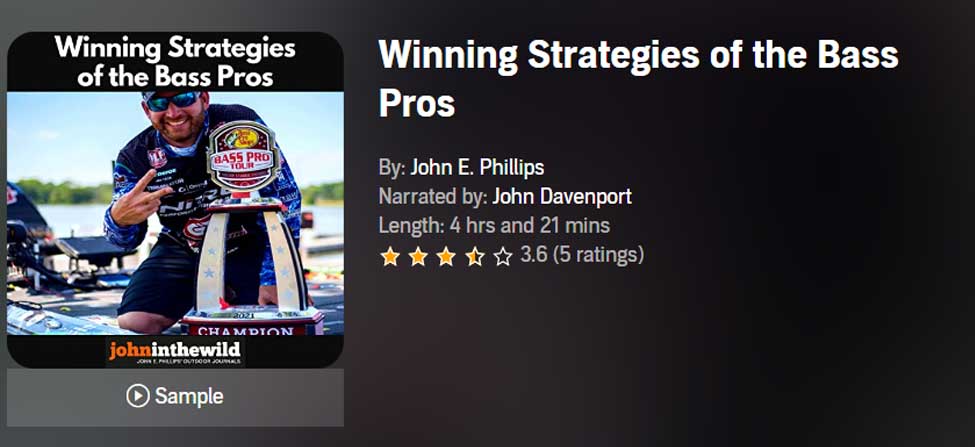
Winning Strategies of the Bass Pros
I learned many years ago if you want to be the best you can be, then you need to learn from the best – particularly when you want to be the best bass fisherman possible. That’s why I’ve written Winning Strategies of the Bass Pros about 11 top bassers.
If you’re wondering at what age you can start learning about bass fishing, you’ll see in the first two chapters about two young men who have come up through the ranks of collegiate bass tournaments – Jordan Lee, who won the Bassmaster Classic in 2017, and Dustin Connell, who won $100,000 in a B.A.S.S. Elite Series tournament in Mississippi in 2017. Top-name pros on both the B.A.S.S. circuit and the FLW circuit are in this book, including Kevin VanDam, Jay Yelas, George Cochran, Rick Clunn, Larry Nixon, Woo Daves, Randy Howell, Scott Canterbury, and Gary Klein.
VERSIONS: AUDIBLE, KINDLE & PRINT
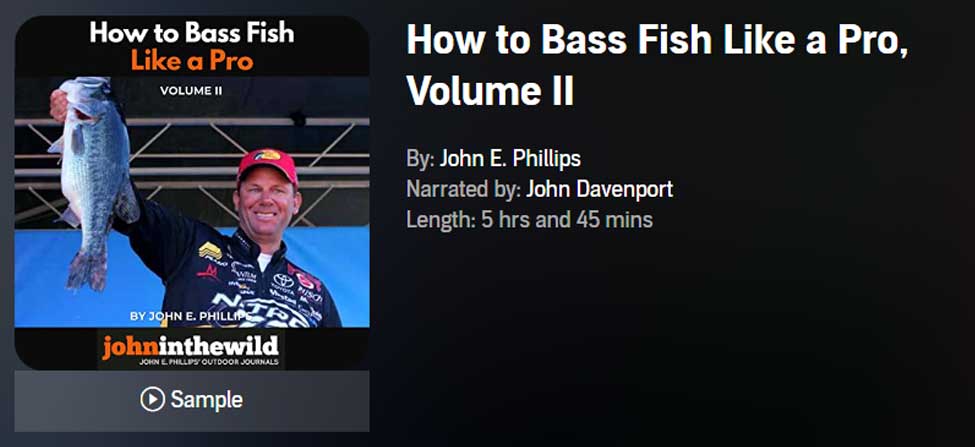
In How to Bass Fish Like a Pro, Volume II, you’ll learn tips and tactics from 21+ Bassmaster Classic winners, two Major League Fishing champions, and 20+ Bassmaster Anglers of the Year about some of the dramatic changes in bass fishing, like:
Depth Finders: You need the latest and greatest depth finders available, since they’re the brains of a bass boat with maps, GPS, side scanning, down scanning, and forward scanning features that enable you to see underwater structures and fish 100-feet away with a 360-degree view. Today’s competitive bass anglers may have four or five depth finders located on the consoles and the bows of their boats.
Other Changes in Equipment: Power fishing for bass using heavy line and rods, big baits, and bait-casting reels that resemble winches have given way to finesse fishing and new techniques like fishing the Ned Rig, the Neko Rig, the Chicken Rig, and the Tokyo Rig on spinning tackle and line as small as 6-10 pounds.
The Growth in Youth and College Competitions for Bass: A young person can begin competition fishing as early as the second grade and continue throughout high school. After that, if the competitor qualifies, he/she may win a scholarship to fish on a college team that eventually may lead them to a professional bass-fishing career.
Changes in the Ways Anglers Bass Fish: Many of the most-consistent winners never pick-up their rods to fish during pre-fishing. Instead, they’ll idle across the water, dropping waypoints from their electronics in places where they’ve identified schools of bass holding. These contestants will have at least 50-250 locations, where they’ve pinpointed schools of bass before a tournament starts.
VERSIONS: AUDIBLE, KINDLE & PRINT

